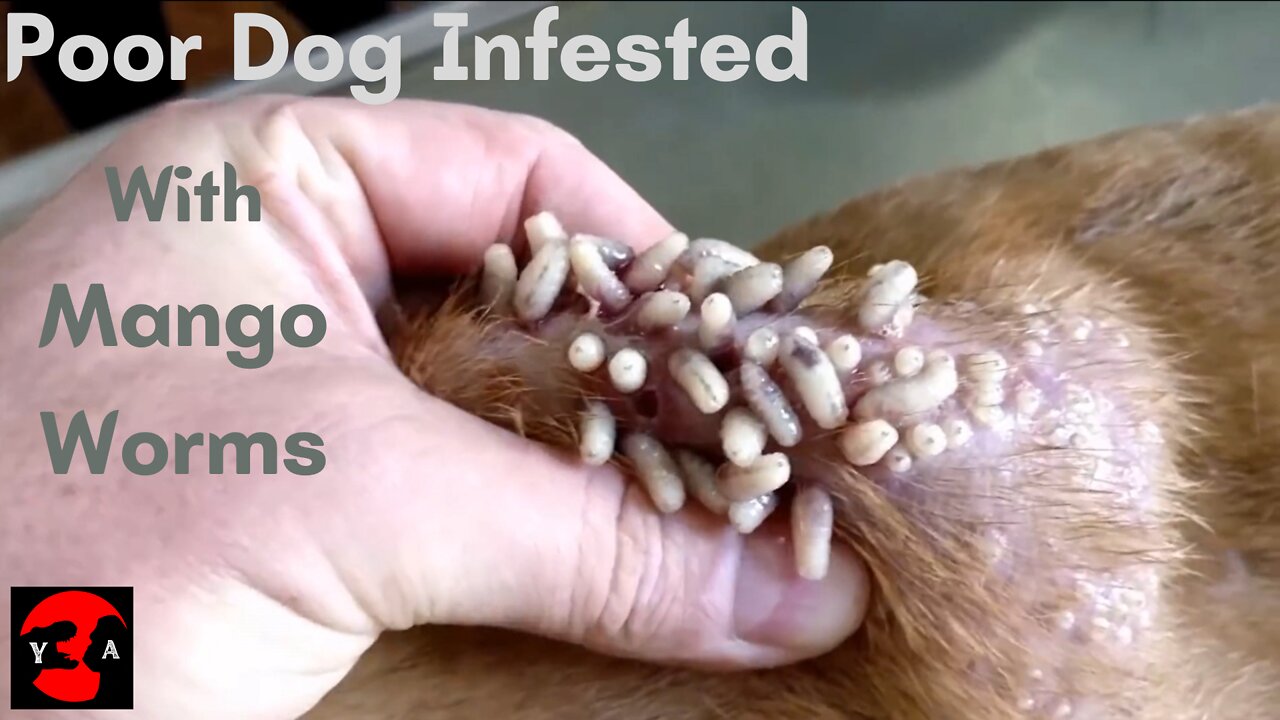Premium Only Content

Poor Dog Infested With Mango Worms!
Mango flies (Cordylobia anthropophaga) are a species of blow fly that’s native to certain parts of Africa, including South Africa and Uganda. These flies have several names, including putsi or putzi fly, skin maggot fly, and tumbu fly.
The larvae of mango flies are parasitic. This means they get under the skin of mammals, including humans, and live there until they’re ready to hatch into maggots. This type of parasitic infestation in a person is called cutaneous myiasis.
Keep reading to learn how to avoid becoming a host to mango fly larvae if you live or travel to parts of the world where they can be found in large numbers.
We’ll also tell you what an infestation looks like and what to do if one or more mango fly eggs get under your skin.
Female mango flies like to lay their eggs in dirt or sand that carries the scent of urine or feces. They may also lay their eggs in the seams of clothing, bedding, towels, and other soft materials that have been left outdoors.
Items that smell of sweat also attract mango flies, but washed clothes can also attract them. Clothing that’s dropped to the ground and laundry that’s being air-dried outside are some examples of places where mango fly eggs may be left.
Mango fly eggs are very tiny. The naked eye usually can’t see them. Once laid, they hatch into larvae, their next stage of growth. This process usually takes around three days.
Larvae from the hatched eggs crawl under the skin and grow
Mango fly larvae can survive without a host for up to two weeks. Once the larvae make contact with a mammalian host, such as a dog, rodent, or person, they painlessly burrow under the skin.
Once under the skin, the larvae feed on subcutaneous, living tissue for two to three weeks as they continue to grow. During this time, a red, solid boil with a hole or tiny black dot on top will form and grow. Each boil contains one maggot worm.
Adult maggots burst out of boils in the skin
As the larvae continue to mature into adult maggots, the boil will start to fill with pus. It may be possible to see or feel the larvae wiggling under the skin during this time.
When larvae are fully matured, they burst out of the skin and fall off. As fully formed maggots, they continue to grow into maggot flies over a three-week period.
-
 4:02:20
4:02:20
Nerdrotic
8 hours ago $10.35 earnedKimmel MELTDOWN | Hollywood Boycotts Disney | Friday Night Tights 372 with Kaida
76.4K10 -
 34:08
34:08
Bannons War Room
2 hours agoMEGYN KELLY: Jimmy Kimmel and Sore Cultural Losers, and Charlie Kirk's Spiritual Revival, w/ Bannon
27.4K20 -
 59:27
59:27
NAG Podcast
3 hours agoBrandon Straka: BOLDTALK with Angela Belcamino
21.5K5 -

Sarah Westall
1 hour agoVietnam Shuts down 86 Million Bank Accounts, The Fourth Turning & more w/ Andy Schectman
160 -
 LIVE
LIVE
Flyover Conservatives
8 hours agoMary Flynn O’Neill and Clay Clark: The Church Must Rise or America Falls | FOC Show
204 watching -
 LIVE
LIVE
I_Came_With_Fire_Podcast
10 hours agoThe Global ANTIFA Connection You've Never Heard Of | The Israel Question
202 watching -
 16:38
16:38
RTT: Guns & Gear
18 hours ago $0.06 earnedExtar EP9 Review: The Best Budget 9mm PCC?
1563 -
 7:53
7:53
Rethinking the Dollar
11 hours agoMass Firings in Tech: The Real Agenda Behind 166,000 Cuts
2801 -
 1:02:28
1:02:28
BonginoReport
5 hours agoFeds Monitor Threats Ahead of Kirk Memorial - Nightly Scroll w/ Hayley Caronia (Ep.138)
212K122 -
 55:51
55:51
Candace Show Podcast
4 hours agoWho Moved The Camera Right Above Charlie's Head? | Candace Ep 239
71.1K448